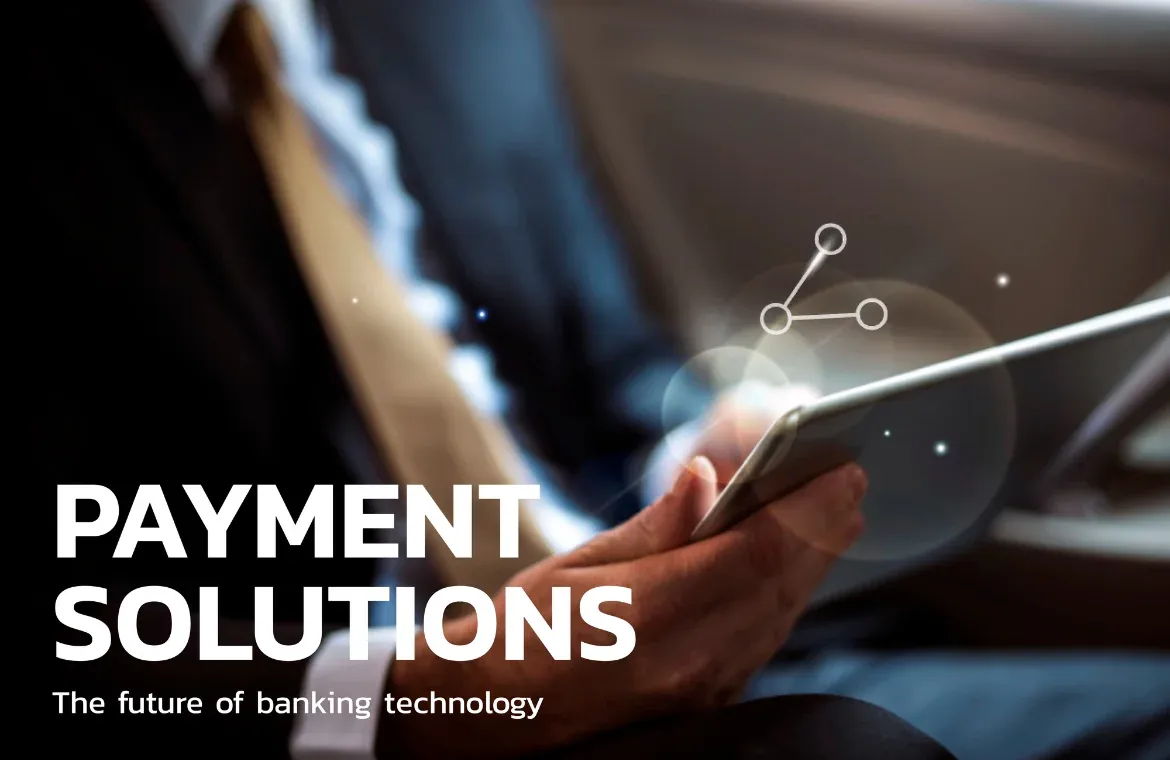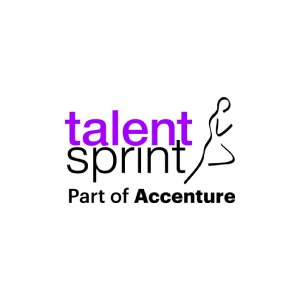AI in Finance: How Technologies Reshaping Payments, Lending, Insurance, and Risk

The financial industry has always been data-driven and quick to adopt technologies that improve efficiency, reduce costs, and combat fraud. Today, AI is accelerating that evolution. As we move into 2026 and beyond with shifting regulations, real-time data demands, embedded finance, and rising customer expectations AI is becoming the core infrastructure behind payments, lending, insurance, and risk management.
Financial firms now use AI to streamline operations, enhance customer experience, and strengthen fraud and risk detection. With rapid advances in machine learning and automation, the sector is entering a new era of intelligence, personalization, and always-on monitoring.
The 2026 Finance Technology Transformation
The finance technology landscape is on the brink of its most significant shift since the ERP revolution of the 1990s. By 2026, traditional finance systems built on legacy ERPs, spreadsheets, and disconnected point solutions will no longer meet the demands of modern business. CFOs and finance leaders who delay modernization risk falling behind as AI-powered finance operations set a new standard for speed, accuracy, and strategic insight.
This transformation isn’t simply about layering AI onto existing tools. It requires a complete reimagining of finance technology to build intelligent, interconnected systems that understand context, learn from patterns, and operate autonomously. The AI-driven finance stack of 2026 marks a decisive move from reactive, manual processes to proactive, intelligent workflows, freeing finance teams to focus on high-value strategic initiatives and decision-making.
How Technologies Reshaping Payments?
The payments landscape is undergoing a profound transformation, driven by a convergence of new technologies, regulatory shifts, and evolving consumer expectations. Today, financial institutions, PayTech’s, and fintech’s are leveraging these innovations to deliver faster, safer, and more personalized payment experiences. Here are the key forces reshaping payments:
1. Open Banking: Open banking enables payments directly from bank accounts via APIs, creating flexible, account-to-account (A2A) options. It allows businesses and consumers to automate payments and empowers banks to offer more innovative, integrated financial services.
2. Real-Time Payments (RTP): RTP networks move money instantly from sender to receiver. When combined with value-added services like alias-based payments they simplify transactions, increase adoption, and open new revenue streams for financial providers.
3. Cross-Border Payments: Emerging technologies like digital assets, DLT, and ISO 20022 messaging are making cross-border payments faster, cheaper, and more transparent. Modernized rails help banks and PSPs provide efficient international transactions with richer data.
4. Buy Now, Pay Later (BNPL): BNPL offers instant credit and installment-based payment options at the point of sale. Initially popular in retail, it’s expanding into healthcare, corporate, and service sectors, providing convenience for consumers and sales growth for merchants.
5. Digital Wallets and Super Apps: Digital wallets centralize payments and financial management, while super apps integrate lifestyle, commerce, and finance in one platform. These solutions enhance convenience, loyalty programs, and customer engagement, especially in APAC markets.
6. Embedded Payments: Embedded payments integrate payment functionality directly into non-financial platforms like marketplaces and apps. This seamless approach reduces friction, improves customer experience, and creates new business opportunities for banks and PSPs.
AI in Payments: Speed, Security, and Personalization
AI is transforming payments from slow, rules-based processes into systems that are real-time, adaptive, and personalized. Here’s how it reshapes the core pillars of modern payment ecosystems.
1. Fraud Detection and Prevention
- Real-time anomaly detection: AI evaluates each transaction as it happens, spotting unusual behavior instantly. This catches new fraud patterns that rule-based systems miss and reduces false positives.
- Behavioral biometrics: Typing rhythm, swipe patterns, device handling—AI uses these subtle signals to verify identity continuously, making impersonation extremely difficult.
- Adaptive, frictionless authentication: AI decides when extra verification is needed. Low-risk actions stay frictionless; high-risk ones get step-up security. This keeps users safe without hurting checkout conversion.
2. Cross-Border Payments & Settlements
- AI routing for optimal FX: Instead of fixed routes, AI selects the fastest and cheapest way to move money across borders, adjusting to volatility and network conditions in real time.
- Pattern-based AML screening: AI analyzes transaction networks, behaviors, and sequences to detect laundering schemes early, reducing false positives and easing compliance workloads.
3. Payment Operations Enhancement
- Dispute automation: AI classifies disputes, gathers documents, and resolves simple cases automatically cutting resolution times dramatically.
- Intelligent chargeback management: AI predicts which chargebacks are valid, identifies friendly fraud, and compiles evidence. Merchants recover more revenue with less manual work.
- Predictive cash-flow insights: By analyzing transaction trends, AI forecasts upcoming cash needs and peak periods, giving merchants clearer visibility and control.
4. Personalized Payment Experiences
AI-tailored spending recommendations: Users receive personalized advice best payment method, rewards opportunities, and spending insights right at checkout or in-app.
Smart payment orchestration: For enterprises using multiple processors, AI chooses the best route for each transaction based on cost, uptime, and approval probability raising acceptance rates automatically.
Case Study: JPMorgan Chase’s AI-Driven Operational Transformation
JPMorgan Chase set out to modernize its massive banking operations by reducing manual workloads, improving service quality, and streamlining payments and back-office processes. To achieve this, the bank invested $18 billion in technology and built an internal generative-AI platform now used by more than 200,000 employees.
The platform integrates 100+ AI tools that automate routine tasks, accelerate data analysis, support customer service, and enhance decision-making. In consumer banking, AI has helped cut servicing costs, while in asset and wealth management it speeds up research and augments advisory teams with real-time insights.
Impact:
- 30% reduction in servicing costs
- Projected 10% decrease in operational headcount
- 25% increase in customer engagement
- 3×+ boost in advisory productivity
AI in Lending: Faster Approvals and Fairer Decisions
AI is reshaping lending by making credit decisions faster, more accurate, and more inclusive.
Automated Credit Scoring
- Alternative data (utility bills, digital footprints) gives lenders a fuller picture of a borrower helping include people with thin credit files.
- Real-time assessments let lenders approve applications within seconds rather than days.
AI-Driven Underwriting
- Risk layer segmentation helps lenders price loans more precisely based on nuanced behavior patterns.
- Improved small-business lending through analysis of cash flow, sales data, and industry trends.
Fraud and Default Prediction
- Predictive delinquency models identify early signs of repayment risk.
- Synthetic identity detection catches advanced fraud attempts quickly.
Embedded Finance & Instant Lending
- AI-powered BNPL decisions at checkout enable instant, low-friction credit.
- Contextual lending integrates financing directly into apps and online journeys.
Explainable AI for Compliance
- Interpretable models ensure decisions follow fair lending rules.
- Clear audit trails document how automated decisions were made.
AI ultimately enables lending that is smarter, safer, and fairer for everyone.
Case Study: Docsumo’s AI-Powered Transformation of Lending Operations
Traditional lending processes rely heavily on manual document reviews slow, error-prone, and costly for both lenders and borrowers. Many institutions want to adopt AI but face hurdles such as model complexity, deployment challenges, and unclear ROI.
Docsumo solves this gap with an Intelligent Document Processing (IDP) platform designed for rapid deployment and ease of use. Its AI automatically reads and analyzes financial documents bank statements, pay stubs, tax filings and evaluates key credit indicators like income stability, debt-to-income ratio, employment history, spending patterns, and risk signals.
The system goes a step further by validating extracted data against government databases, enabling real-time detection of inconsistencies or fraud. Underwriters no longer sift through dozens of documents; they simply review flagged exceptions. This reduces human error, speeds approvals, and ensures only credible borrowers move forward.
Impact:
- 60–70% lower operational costs
- Loan documents processed in 30–60 seconds
- Higher accuracy, fewer manual touchpoints, and a more seamless customer experience
AI in Insurance: Automation, Accuracy, and Personalization
AI is helping the insurance industry move from slow, manual processes to real-time, precise, and customer-centric operations. From underwriting to claims to customer service, AI enhances both efficiency and fairness.
AI in Underwriting
AI strengthens underwriting by analyzing more data and analyzing it more accurately.
- Risk scoring with computer vision: Images of vehicles, properties, or medical scans can be assessed instantly to estimate risk levels with higher precision.
- Behavioral & IoT-based analysis: Data from driving habits, home sensors, or health wearables allows insurers to understand real-world behavior, leading to more accurate and personalized risk profiles.
Claims Processing Automation
AI shortens one of the most painful parts of insurance: waiting for claims approval.
- AI-powered damage assessment evaluates photos of auto or property damage in seconds.
- Document intelligence automatically extracts information from forms, receipts, and reports dramatically speeding up claim resolution.
Fraud Detection
Fraud costs insurers billions, and AI is helping to close the gap.
- Pattern recognition and network analysis reveal suspicious relationships and hidden fraud rings.
- Detection of staged accidents, inflated claims, or phantom providers reduces losses and protects honest customers.
Personalized Insurance Products
AI enables insurance that adapts to individual lifestyles.
- Usage-based insurance (UBI) adjusts premiums based on driving behavior or device signals.
- Micro-insurance and dynamic pricing offer targeted, flexible coverageperfect for travelers, gig workers, or short-term needs.
Customer Experience Transformation
AI boosts service quality while reducing operational load.
- Intelligent chatbots provide fast, accurate support and handle routine customer queries.
- Personalized policy recommendations ensure customers receive plans tailored to their unique risks and preferences.
Case Study: Aviva’s AI-Driven Claims Reinvention
Aviva set out to modernize its slow, costly claims process and partnered with McKinsey and QuantumBlack to build an AI-first operating model. They developed 80+ AI models covering claim routing, liability assessment, fraud signals, documentation analysis, and workflow automation.
A key innovation was the “double helix” approach AI accelerates routine claims, while human experts handle sensitive cases like personal injury. To support this shift, employees received 40,000+ hours of digital and analytics training, ensuring teams could confidently use AI tools.
Impact:
- 23-day reduction in liability assessment time
- 30% more accurate claim routing
- 65% fewer customer complaints and a 7× increase in NPS
- Higher employee engagement and increased use of recycled parts in repairs
AI in Risk Management: Predict, Prevent, and Respond
AI is transforming risk management from a backward-looking function into a proactive, real-time intelligence system. Instead of reacting to problems after they surface, organizations can now anticipate threats earlier, respond faster, and maintain stronger control over complex risk environments.
Market Risk
AI enhances the ability to understand and prepare for market uncertainty.
- Predictive modeling for volatility analyzes millions of data points market signals, news flows, macro trends to forecast fluctuations more accurately.
- AI-based scenario generation powers advanced stress tests, revealing how portfolios might behave under extreme but plausible conditions.
Outcome: better resilience and more informed decision-making during market instability.
Operational Risk
AI strengthens the institution’s internal defenses.
- Real-time cyber threat monitoring identifies unusual patterns, malware signatures, or suspicious activity before they escalate.
- AI-driven anomaly detection in internal controls spots irregular workflows, unauthorized access, or process deviations.
Result: fewer internal failures, breaches, and operational disruptions.
AML/KYC Automation
Regulatory compliance becomes faster, more accurate, and less manual.
- Intelligent identity verification uses biometrics, document analysis, and behavioral data to confirm identities quickly and securely.
- Machine learning transaction monitoring detects suspicious movements layering, structuring, or unusual money flows with greater precision and fewer false positives.
This reduces compliance risk while improving efficiency.
Enterprise-Wide Risk Platforms
AI unifies fragmented risk data into one coherent view.
- Unified risk scoring integrates market, credit, operational, and fraud data to produce a holistic risk profile.
- Real-time dashboards let leaders track exposures, alerts, and incidents instantly.
This creates a single source of truth for risk decisioning.
Governance & Responsible AI
As AI becomes central to risk functions, oversight becomes critical.
- Bias guardrails ensure models treat customers fairly and align with regulatory expectations.
- Automated audit trails provide transparent documentation that explains how decisions were made vital for regulators and internal governance.
Case Study: Mastercard’s AI-Powered Leap in Fraud Detection
Mastercard modernized its fraud prevention strategy with Decision Intelligence Pro, a generative AI–enhanced engine designed to keep pace with fast-evolving fraud tactics. Traditional rule-based systems often missed subtle threats and generated too many false positives, frustrating customers and creating workload spikes for issuers.
Decision Intelligence Pro uses transformer-based AI trained on hundreds of billions of historical transactions. It analyzes each payment in under 50 milliseconds, examining signals like merchant patterns, device behavior, location, and biometrics to build a precise risk profile.
Key Results
- 20–300% better fraud detection
- 200% fewer false positives
- 300% faster identification of risky merchants
By predicting and preventing fraud in real time without slowing payments Mastercard shows how generative AI can dramatically improve security, accuracy, and customer experience while maintaining human oversight to ensure fairness and reduce bias.
Way Forward
The future of finance is no longer about experimenting with AI it’s about competing through it. As payments, lending, insurance, and risk functions shift to real-time, intelligence-driven models, AI is redefining speed, trust, and customer value. Institutions already modernizing with AI aren’t just improving efficiency they’re unlocking new revenue models, delivering hyper-personalized experiences, and preventing fraud at a scale humans alone could never match.
By 2026, the industry divide will be undeniable: AI-native organizations will set standards for cost, compliance, and customer experience, while legacy-bound firms will struggle to keep pace. JPMorgan, Aviva, Mastercard, and leading fintech’s have already proven the ROI.
This transformation demands new skills. A comprehensive IIM Calcutta fintech course equips professionals with the technical, analytical, and strategic competencies needed to navigate AI-driven finance from digital payments to risk analytics.
The question is no longer if AI will reshape finance, but whether you’re prepared to lead it. The time to upskill and modernize is now.

TalentSprint
TalentSprint is a leading deep-tech education company. It partners with esteemed academic institutions and global corporations to offer advanced learning programs in deep-tech, management, and emerging technologies. Known for its high-impact programs co-created with think tanks and experts, TalentSprint blends academic expertise with practical industry experience.



